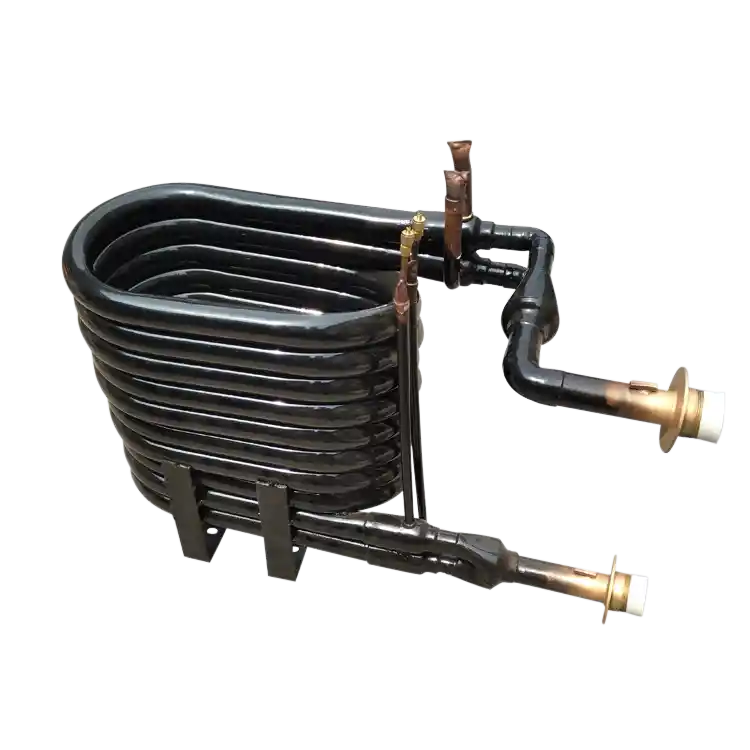Introduction
In this article, we will explore the diverse applications of coaxial heat exchangers in refrigeration systems. By leveraging the unique advantages of coaxial heat exchangers, refrigeration systems can achieve enhanced cooling efficiency, improved temperature control, and optimized performance.
1. Understanding Coaxial Heat Exchangers
Coaxial heat exchangers are specialized devices designed to facilitate heat transfer between two fluid streams. Their innovative configuration offers several benefits for refrigeration systems, making them integral components in cooling applications.
1.1 Working Principle of Coaxial Heat Exchangers
Coaxial heat exchangers employ a concentric design with an inner tube and an outer tube. This arrangement allows for the simultaneous flow of refrigerant and heat exchange fluid, enabling efficient heat transfer through conduction and convection. The heat is transferred from the refrigerant (inner tube) to the heat exchange fluid (outer tube).
1.2 Advantages of Coaxial Heat Exchangers in Refrigeration Systems
Coaxial heat exchangers provide numerous advantages when integrated into refrigeration systems:
| Advantages | Descripción |
|---|---|
| Enhanced Heat Transfer | The coaxial configuration maximizes heat transfer surface area, leading to improved cooling efficiency and reduced energy consumption. |
| Compact Design | Coaxial heat exchangers have a small footprint, making them suitable for installation in space-constrained refrigeration systems. |
| Corrosion Resistance | Coaxial heat exchangers can be constructed using corrosion-resistant materials, ensuring durability and longevity in refrigeration applications. |
| Reduced Refrigerant Charge | Coaxial heat exchangers allow for more efficient heat exchange, enabling the use of smaller refrigerant volumes and reducing system refrigerant charge. |
| Versatile Applications | Coaxial heat exchangers can be utilized in various refrigeration systems, including air conditioning, refrigerated display cases, cold storage, and more. |
2. Applications of Coaxial Heat Exchangers in Refrigeration Systems
Coaxial heat exchangers find diverse applications in refrigeration systems, catering to different cooling requirements and promoting energy efficiency.
2.1 Air Conditioning Systems
Coaxial heat exchangers play a critical role in air conditioning systems. They facilitate heat transfer between the refrigerant and the ambient air, enabling efficient cooling and temperature control in residential, commercial, and industrial settings.
2.2 Refrigerated Display Cases
Coaxial heat exchangers are utilized in refrigerated display cases found in supermarkets, convenience stores, and food retail outlets. They assist in the cooling of the display cases, maintaining optimal temperatures for preserving the freshness and quality of perishable goods.
2.3 Cold Storage Facilities
Coaxial heat exchangers find applications in cold storage facilities, such as warehouses and distribution centers. They aid in the heat removal process, ensuring proper temperature control and preservation of stored products, including frozen foods, pharmaceuticals, and chemicals.
2.4 Industrial Cooling Systems
Coaxial heat exchangers are instrumental in industrial cooling systems. They assist in the heat exchange process, enabling efficient cooling of industrial processes, machinery, and equipment, thus preventing overheating and optimizing production efficiency.
2.5 Process Chillers
Coaxial heat exchangers are commonly used in process chillers, which provide cooling for industrial processes requiring precise temperature control. They facilitate the transfer of heat from the process fluid to the cooling medium, ensuring stable and reliable operation.
2.6 Refrigeration Heat Recovery
Coaxial heat exchangers can be employed in refrigeration heat recovery systems. They enable the recovery of waste heat from refrigeration processes and utilize it for water heating, space heating, or other energy-intensive applications, increasing overall system efficiency.
Conclusion
By incorporating coaxial heat exchangers into refrigeration systems, a wide range of cooling applications can benefit from enhanced efficiency, improved temperature control, and optimized performance. The versatile applications of coaxial heat exchangers in refrigeration systems contribute to energy conservation, reduced environmental impact, and the preservation of product quality and integrity.


